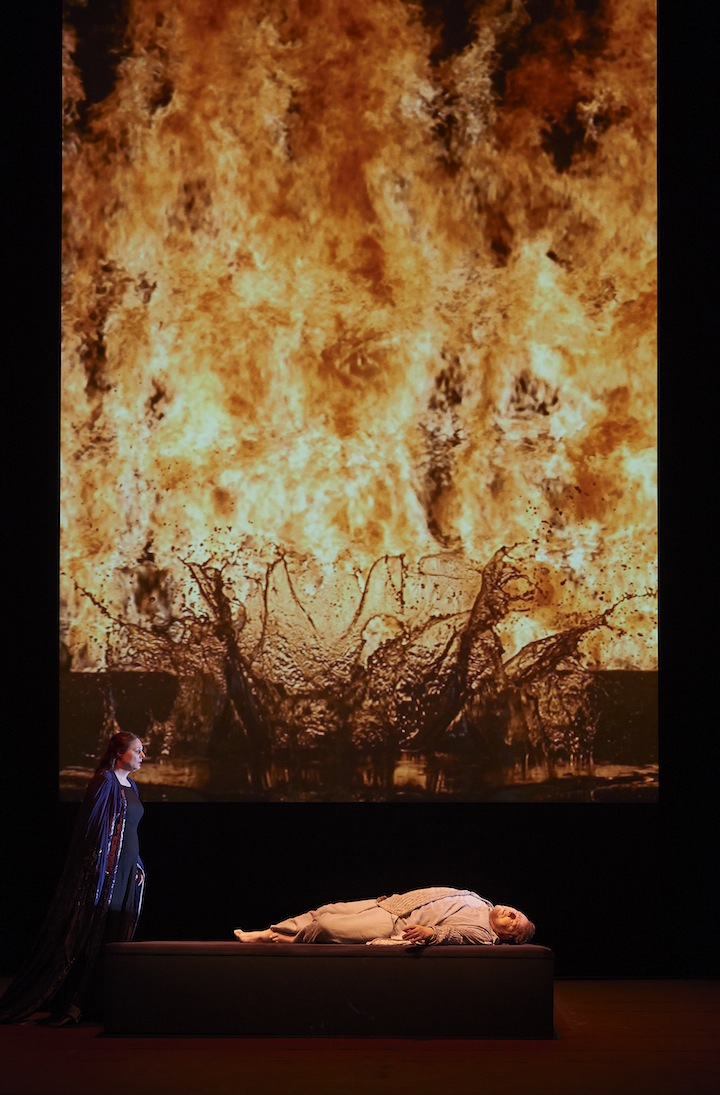
It’s been nearly 26 years since Toronto last saw Richard Wagner’s Tristan und Isolde. Updated for this new generation and premiered at the Four Seasons Centre on Tuesday night, the Canadian Opera Company’s new production is musically rewarding but visually fraught.
- Classical Music 101: What Does A Conductor Do? - June 17, 2019
- Classical Music 101 | What Does Period Instrument Mean? - May 6, 2019
- CLASSICAL MUSIC 101 | What Does It Mean To Be In Tune? - April 23, 2019
Although Wagner acolytes will take in anything by their beloved composer, asking an ordinary opera fan to sit in a theatre for five-and-a-half hours (including two overlong intermissions) demands a big reward in return.
This Tristan und Isolde does so with a brilliant cast and an even more brilliant turn on the podium by Canadian Opera Company music director Johannes Debus.
This is the first time the maestro has conducted this opera. It has emerged gorgeously formed, filled with nuance as well as a broad vision of where the musical component that’s integral to Wagner’s narrative needs to go.
The COC Orchestra played spectacularly well both in the pit and, in the case of various members of the brass section, in the balconies.
The star of the strong singing cast on Tuesday night was German soprano Melanie Diener as Isolde, the Irish princess of Medieval who has been promised to Marke, King of Cornwall, but whose love potion turns her into the love slave of Tristan, Marke’s nephew and intended successor.
Diener, making her COC début, displayed a classically perfect Wagner voice — big, rich, capable of a wide range of dynamic expression and unbelievable stamina. Greek-American mezzo Daveda Karanas was also great as Isolde’s companion Brangäne.
The big news among the male cast members was the long-awaited return of Ben Heppner to a Toronto opera stage. To do so as Tristan, one of his old signature roles, turned into a particular treat once his voice warmed up and regained its honey-oak lustre. All the big money notes were there, as promised.
The rest of the men delivered flawless performances, including baritone Alan Held as Tristan’s servant Kurwenal and German bass Franz-Josef Selig in an impressive COC début as King Marke.
Sandra Horst’s chorus did its stentorian best from the balconies or wings, when called upon.
Now for the production, a recreation of one presented at the Paris Opéra in 2005, directed by Peter Sellars in his COC début.
Rather than sets, the stage is clad in black and dominated by a large video screen. The singers wear black (with the exception of Tristan and Kurwenal in the final act) in modern dress. James Ingall’s lighting is sombre. So what is most visible in all this darkness are Bill Viola’s videos.
The live humans on stage are so static as to be secondary; the production being a mix of voice, orchestra and video. So far, so good.
Unfortunately, the video veers from being a visual embellishment of the text and music to telling its own side story. Two others sets of Tristans and Isoldes appear on the big screen — but the only way you’d really know who they are or what they represent is by reading the programme notes.
The videos frequently fight with the live action. There is one instance in the first act where the divergence includes both main characters taking off all their clothes on the much-larger-than-life screen. At that point, the tiny humans on the stage can just as well shuffle off and take a coffee break, as far as the audience’s attention is concerned.
I can deal with the clash of visuals and story, but what didn’t work for me was the special, Wagnerian suspension of regular time.
Richard Wagner’s later operas are long, long affairs that require a 21st century city dweller to completely reset their internal clock in order to not go crazy waiting for the show to unfold. Wagner’s music, when allowed to work its magic, usually accomplishes this task very nicely by the time the long Overture is done.
But, in this production, the videos start up as soon as the Prelude is over. Even though Viola has taken care to not let anything happen in real time, the abrupt changes of image snap the spell over and over again over the course of the five-and-a-half hours, which was hard to take.
Sellars has added a coup de théâtre at the end of Act I with the entrance of King Marke that is fun, but hardly fits with the let’s-be-arty-in-black sobreness of the rest of the opera.
Fortunately, the cast and orchestra are there to soothe the ears when the eyes get frustrated, but this production may not be to everyone’s taste.
For all the details, click here. Note that there are dates when other performers sing the title roles.
John Terauds
- Classical Music 101: What Does A Conductor Do? - June 17, 2019
- Classical Music 101 | What Does Period Instrument Mean? - May 6, 2019
- CLASSICAL MUSIC 101 | What Does It Mean To Be In Tune? - April 23, 2019



